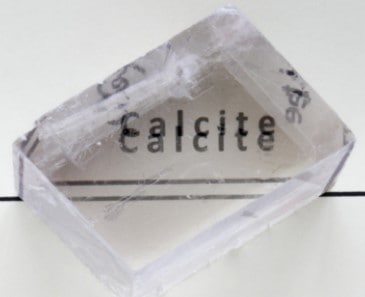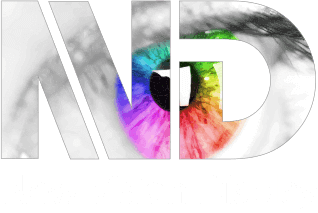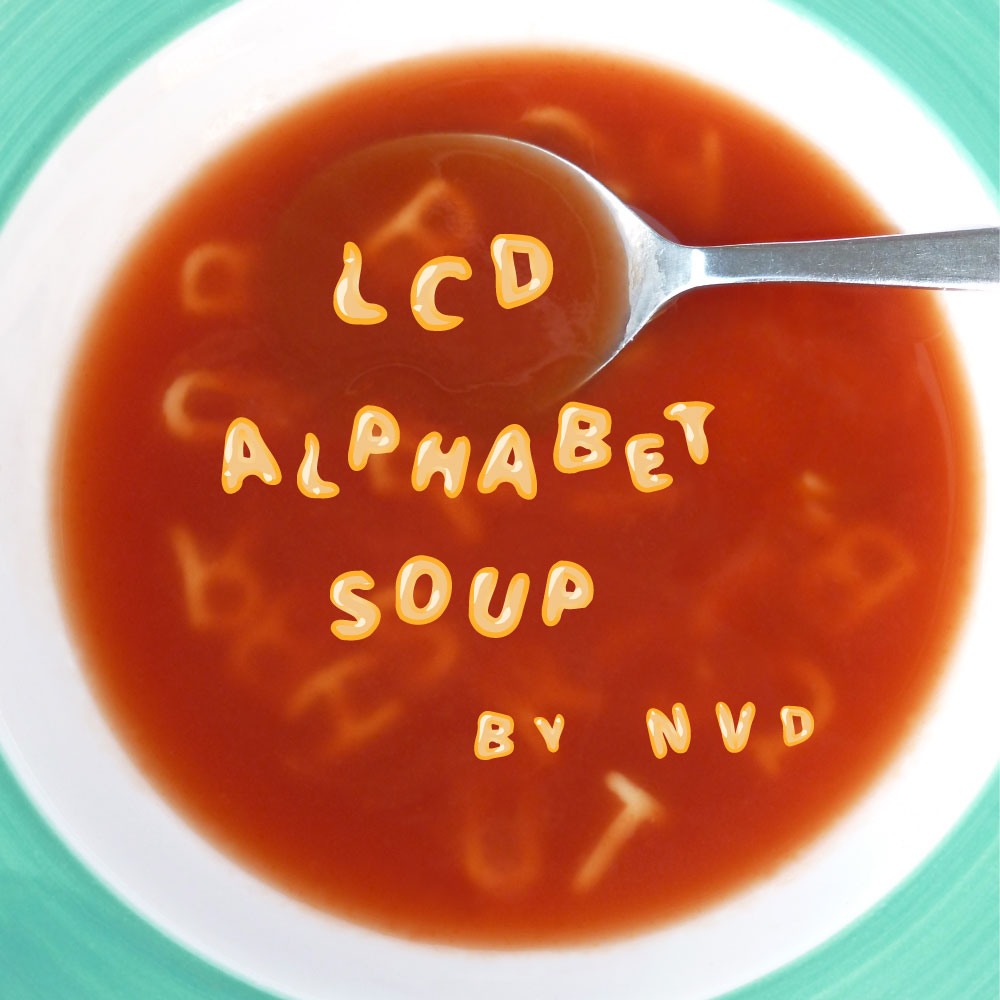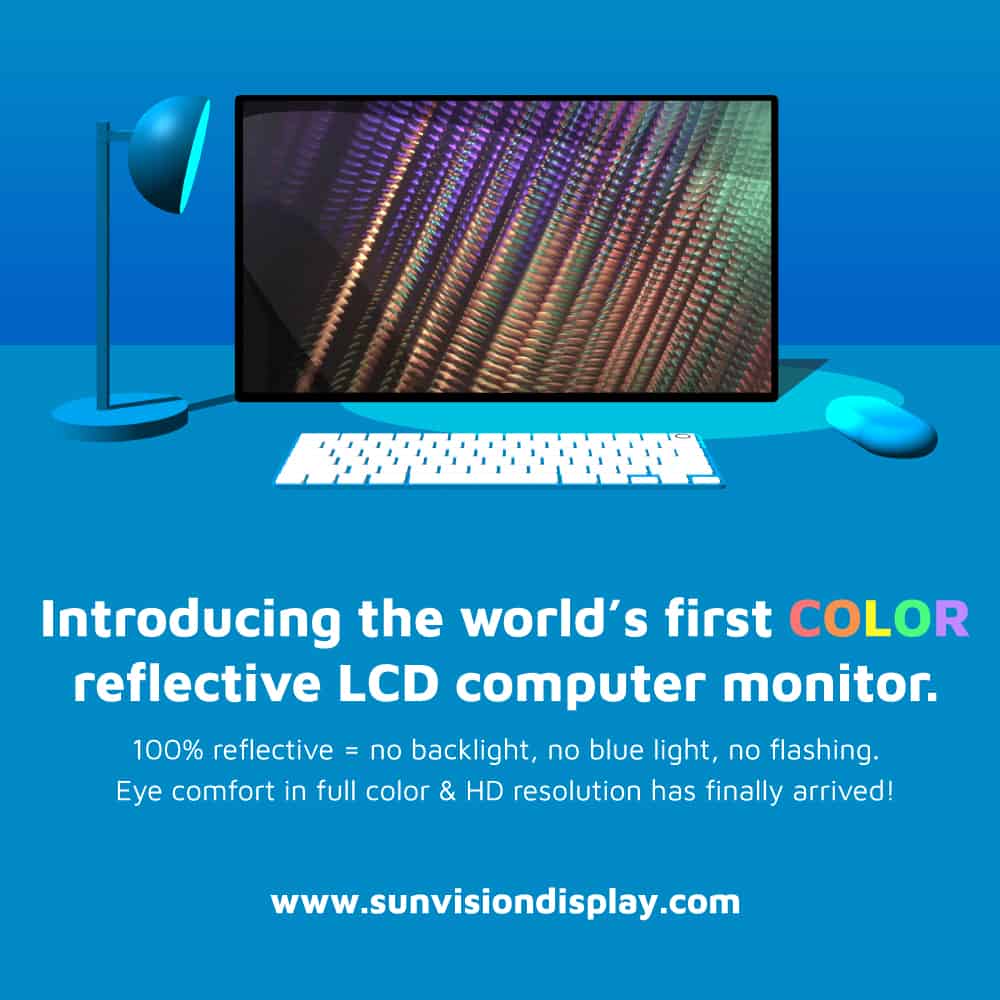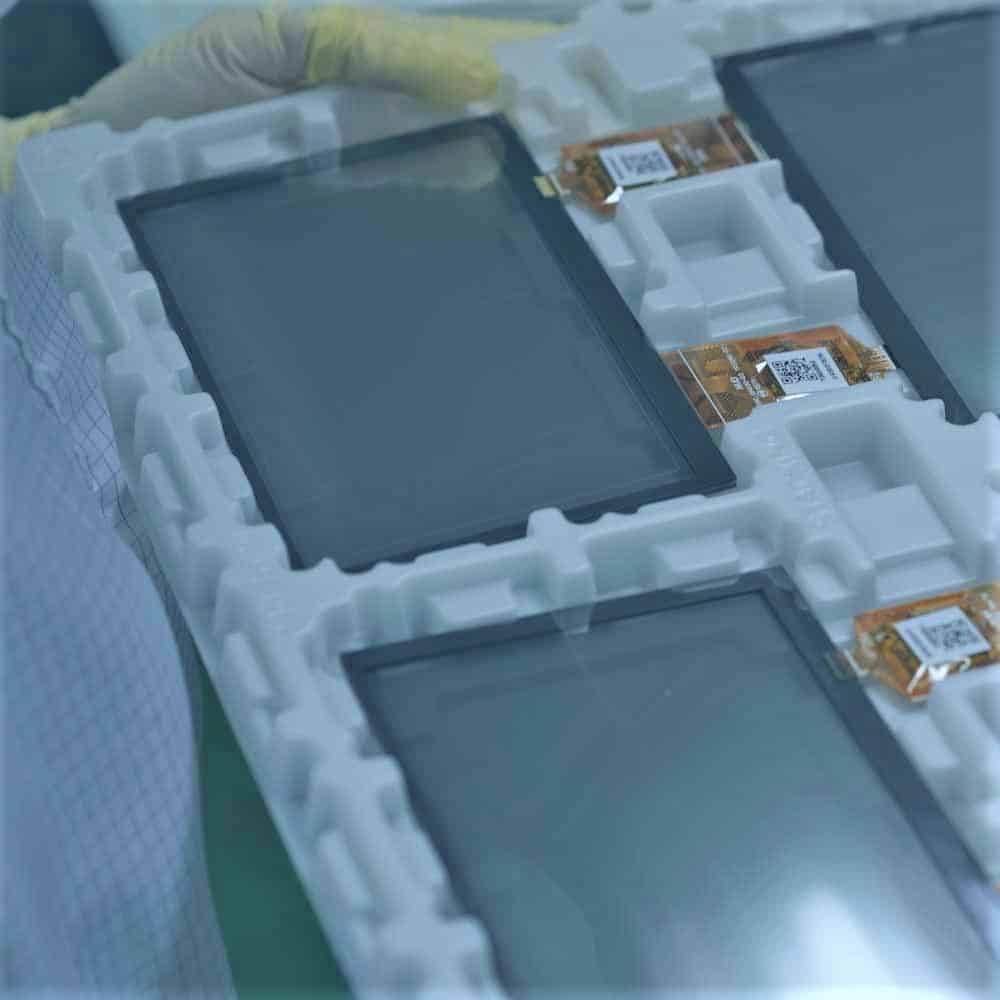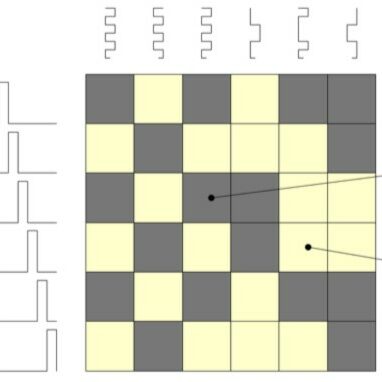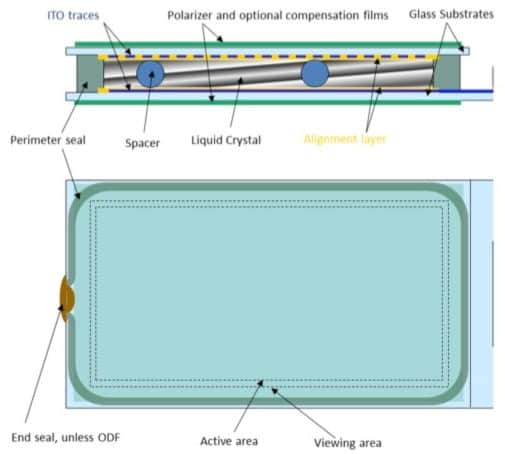How the Birefringence of Liquid Crystals Affects Polarization
Estimated reading time: 3 minutes
Why does light change its polarization when it passes through a liquid crystal layer?
Matter has a certain ‘density’ where light is concerned. Most matter does not let visible light pass through. Some matter does (i.e. transparent matter), but even transparent matter hinders the propagation of light; it slows it down. Like many crystals, liquid crystal material is transparent and slows down the light. Because liquid crystal molecules are all more or less parallel to each other it is easy to imagine that light swinging in one direction may more easily pass through than light swinging in another direction. Hence the refractive index (a value for how much slower the light propagates in a material) can be different for light swinging parallel or perpendicular to the molecules. This is referred to as “optical anisotropy”. Optical anisotropy is defined as the difference between the extraordinary and ordinary refractive index (Δn = ne-no) and is sometimes called “birefringence”.
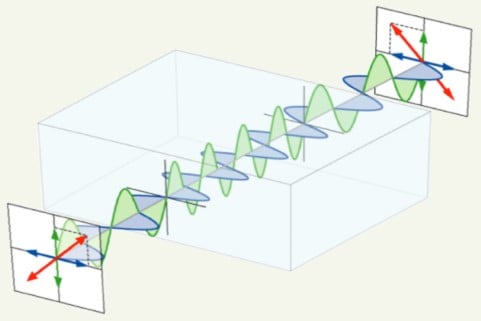
When light of any polarization state enters a transparent birefringent medium, it will split into two beams. One slows down more than the other and the two beams may even take different directions in the material. Once the light exits the medium, the two beams recombine. It is at this recombination point where a new polarization state may appear due to the differential retardation. Retardation describes how much one beam has been held back compared to the other after passing through a transparent birefringent medium. Usually, retardation is expressed in fractions of a wavelength. It is calculated by multiplying the layer thickness with the birefringence.
